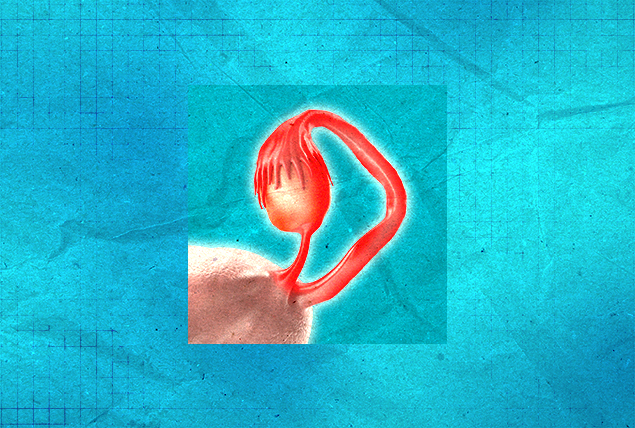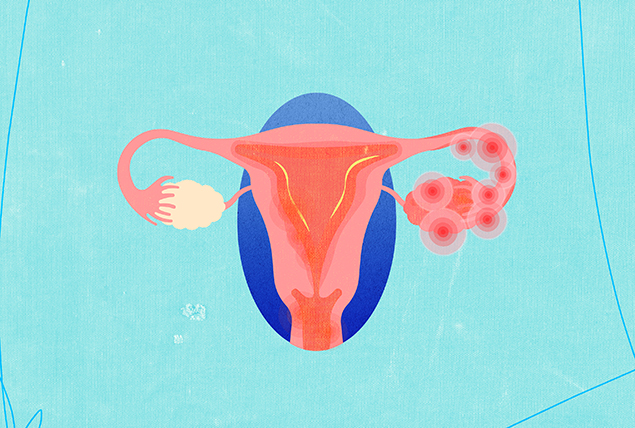Get the Lowdown on Pelvic Inflammatory Disease

Pelvic inflammatory disease (PID) is an infection of the female reproductive organs caused by a bacterial infection that travels through the lower reproductive tract. Affected organs can include the vagina and cervix.
Also affected are the uterus, fallopian tubes and ovaries, or the upper reproductive tract. PID occurs when microorganisms travel from the lower to upper reproductive organs, which can change the composition of bacterial flora.
PID is common, affecting about 1 million women per year in the United States; it is most prevalent among women ages 15 to 25.
Frequently caused by untreated sexually transmitted infections (STIs) such as chlamydia or gonorrhea, PID may also be caused by bacterial vaginosis (BV) and, less commonly, a recent intrauterine device (IUD) implantation.
PID signs and onset of symptoms
The symptoms of PID can be wide-ranging. PID can initially be asymptomatic, and then symptoms can range from mild to severe. Over time, the chances of developing a complication from untreated PID increase.
Complications include scarring, infertility, increased risk of ectopic pregnancy, chronic pelvic pain, and an abscess in the uterine tract that can lead to a serious infection. The disease is also characterized by inflammation of the genital tract, marked by cervical discharge.
The symptoms of PID are varied, said Anna Cabeca, D.O., an OB-GYN in Dallas. Due to the diverse symptoms, people may not receive a proper diagnosis or might prolong care because they attribute signs to another cause.
"PID is often asymptomatic, or the symptoms are so mild that they get overlooked. In those cases, PID can sometimes go unnoticed for years," Cabeca said.
It can take days or weeks for PID to develop, and the time at which people show symptoms is variable.
"Symptoms can be as common as pain when urinating, which can be misdiagnosed for a UTI [urinary tract infection], to pain in your lower abdomen, fever, unpleasant, unusual vaginal discharge, pain during sex or even bleeding in between your period," Cabeca said.
Fever associated with PID is typically higher than 101 degrees Fahrenheit. Sometimes symptoms include stomach pain with or without nausea or vomiting. Abnormal vaginal discharge can vary in color and scent, but it typically produces a foul odor.
One of the most common symptoms of PID is a dull pain in the lower abdomen. The pain may begin after menstruation and increase in severity during sexual intercourse. People may also experience bleeding during and after sex.
PID can affect menstruation by causing more intense pelvic pain than normal cramping, a heavier or longer-lasting menstrual flow, or a delay in the onset of menstruation.
Even mild symptoms can cause tubal damage and lead to complications, so it's essential to get treatment promptly. Symptoms vary from one person to the next depending on patients' individual immune systems and their body's ability to fight infection, Cabeca said.
Complications of PID
PID can occur in stages, and complications can arise because it can be undetected and untreated for some time. According to Contemporary OB/GYN, 1 in 4 women with PID develop a complication from the condition.
Complications commonly include ectopic pregnancy due to scarring caused by PID. The fallopian tubes are narrow and fragile structures, so damage to them can create a risk of ectopic pregnancy, where a fertilized egg implants outside the uterus.
That same scarring can lead to infertility. Many people first learn about their PID diagnosis when they struggle to get pregnant.
Another common complication is long-lasting pelvic pain. At least one-third of women with PID experience chronic pelvic pain, which is usually due to adhesions and inflammation. Uterine tenderness is also typical.
An abscess in the reproductive tract is another complication of untreated PID. When a pocket of infected fluid builds in the reproductive tract, most commonly in the fallopian tubes or ovaries, it creates an abscess. A tubo-ovarian abscess is one kind of abscess most commonly caused by PID.
Someone might not know they have PID until the detection of an abscess, which can cause pain and fever. Usually, an abscess from PID is a later complication, when the infection is untreated. An abscess that ruptures can lead to life-threatening consequences.
Diagnosis and testing
PID symptoms are vague and easily attributed to other issues, such as bacterial vaginosis, which also causes foul-smelling vaginal odor, abnormal vaginal discharge and painful urination.
Unfortunately, these similarities can lead providers to misdiagnose the condition.
"Symptoms of PID are common symptoms of other STIs," Cabeca explained. "Without proper testing, it can be misdiagnosed as appendicitis, ectopic pregnancy, ruptured ovarian cysts or other problems. It is important to remember that symptoms are signals in your body telling you something is wrong, but it won't tell you what is wrong."
Any symptom of PID is cause for making an appointment with your healthcare provider, especially if you are sexually active and have not received recent STI testing. The most common causes of PID are untreated gonorrhea and chlamydia, which are largely asymptomatic.
Severe symptoms such as vomiting, intense pelvic pain, fever and feeling faint are worth a trip to the emergency room for immediate care.
PID can't be detected with a single test. Still, a gynecologist or a primary care provider can make the diagnosis with a combination of criteria, such as your medical history, symptoms, a pelvic exam and cervical swab, blood and urine tests, and an ultrasound.
Less frequently, they may use a laparoscopy, which involves making small incisions that allow doctors to examine the pelvis with a camera.
Preventing PID
To prevent PID, seek prompt testing if a partner has an STI or you've had unprotected sex. The Centers for Disease Control and Prevention (CDC) recommends people who are sexually active and younger than 25 get STI testing at least once a year for gonorrhea and chlamydia.
"The only way to get a clear answer is through proper, thorough testing. When in doubt, or if you are in any sort of discomfort, I highly recommend you consult with your provider," Cabeca said.
Prompt treatment can reduce your risk of developing future complications from PID. The later someone receives treatment, the harder it may be to resolve complications.
Given the urgency of talking to a doctor and getting tests done, telehealth might be the best way to begin. Video visits are a regular part of many physicians' practices, and they're a good way to see a doctor quickly, as many offer same-day appointments. Then, if follow-up is required, you have your foot in the door. Giddy telehealth is an easy-to-use online portal that provides access to hundreds of healthcare professionals whose expertise covers the full scope of medical care.


















